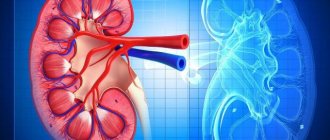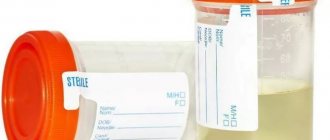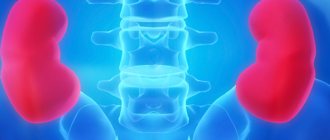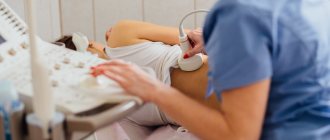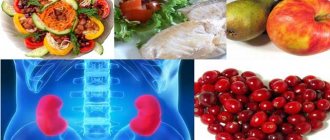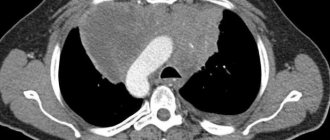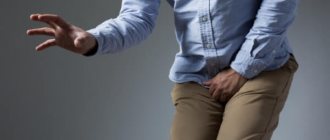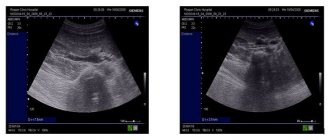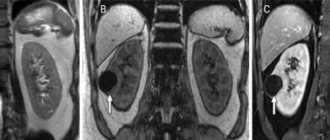general information
The kidneys play an indispensable role in our body by cleaning the blood vessels and removing harmful toxins from them. The organs should be located in the area of the upper lumbar and lower thoracic vertebrae. They have the ability to shift up to 1.5 cm during movement or breathing.
If there is a deviation of 5 cm, painful sensations occur.
Most often, the disease occurs in pregnant women, thin children and the elderly due to age-related wear and tear of the muscular skeleton. The right kidney is located lower than the left, so in 80% of cases the displacement occurs on the right.
Causes of the disease
Healthy paired organs are located in the retroperitoneum at the lumbar level and are supported by several fixation mechanisms:
- elastic and elastic ligaments;
- dense connective membrane;
- sheets of fascia that fix the kidneys to the diaphragm;
- fatty tissue to absorb falls and shocks;
- vascular pedicle;
- lower back muscles;
- pressure inside the abdominal cavity.
If the fixation weakens, the organ moves downward under the influence of gravity. The process is slow, so it is rarely possible to detect the disease at the first stage.
Nephroptosis may be preceded by hereditary diseases, inflammatory processes in the body, urolithiasis, muscle atrophy, as well as:
- sudden change in weight (weight loss or obesity);
- violation of the diet (vegetarian protein-free diets);
- kidney surgery;
- pelvic injuries;
- the presence of tuberculosis, cirrhosis, oncology;
- curvature of the spine (scoliosis, hump);
- pregnancy and childbirth (large baby or twins);
- severe coughing attacks;
- physical inactivity, immobility (coma, disability).
The disease can be triggered by prolonged carrying or lifting of heavy objects, as well as intense exercise.
Classification of nephroptosis
Taking into account the lability of the kidney, such types of prolapse are distinguished as fixing and mobile (wandering kidney).
The formation of a mobile type of kidney occurs in three degrees of nephroptosis:
- Stage 1 - when inhaling, part of the kidney protrudes from the hypochondrium, and when exhaling, it returns to its original position.
- Stage 2 - the kidney moves to the pelvic area. This process is painful (lower back pain, colic). The presence of red blood cells and proteins can be detected in the urine, which is caused by increased pressure in the vessels of the kidneys.
- Stage 3 - the renal pedicle lengthens and twists, thereby impairing the excretion of urine, resulting in inflammatory processes.
Nephroptosis of the 1st degree is characterized by the absence of symptoms, so it is extremely difficult to determine. By palpating the kidney area while taking a deep breath, the doctor can easily detect pathology. Most often, pain at this stage appears after excessive physical activity.
Nephroptosis of the 2nd degree is a continuation of the first stage if you do not take the necessary actions that are aimed at eliminating the pathology.
Nephroptosis of the right kidney is characterized by a significant change in its location. The kidney returns to its normal position as soon as the person lies down on the bed. If this does not happen, the kidney can be set on its own. This manipulation may not even cause pain. For grade 2 nephroptosis, it will be necessary to perform exercises to strengthen the back and abdominal muscles, and eat foods rich in iron and fiber.
Stage 3 nephroptosis of the kidney is the final stage of the evolution of the disease. The pain becomes constant and unbearable.
Stages of the disease
Depending on the severity of symptoms and severity of the lesion, three phases of nephroptosis are distinguished:
- Characterized by the absence of symptoms. Dull and aching pain is possible when the patient sits down after lying down or is upright.
- There is a displacement below the rib; protein and red blood cells are present in the urine. The patient begins to experience paroxysmal pain in the side and urinary retention. Also characterized by a rise in temperature, nausea, and intoxication. Relief occurs when lying on your back.
- Patients feel lethargic, are tormented by depression, and experience painful urine loss. Constant pain does not stop after changing body position. The disease is accompanied by fever, nausea and vomiting. This stage is characterized by increased pressure and the presence of mucus and blood in the urine.
If you make a diagnosis at the initial stage, the treatment of the pathology will be much faster and easier.
Comparison of the disease in men and women
Females more often suffer from this disease; they have difficulty conceiving and bearing offspring, and miscarriages and stillbirths often occur.
| Signs | Men | Women |
| Presence of renal colic | Occurs in 30% of patients | Don't meet |
| Pain intensity and location | Under the ribs, lower back, groin | Pubis, lower thigh |
| Nausea and vomiting | Do not occur or only in later stages | In the initial stages |
| Temperature increase | Up to 39°C | Up to 37-38°C |
| Decreased resistance to stress, weakness | Appears several months after other symptoms | Occurs from the first days of illness |
| Urinary disorders | Feeling of incomplete emptying, urine retention | Itching, burning, stinging |
| Changes in urine tests | Increase in leukocytes and red blood cells | Sediment, mucus, blood |
Unilateral prolapse is more common than bilateral prolapse. If nephroptosis affects two organs at once, then the clinical symptoms are more pronounced than with unilateral prolapse.
Diagnosis of nephroptosis
To diagnose kidney prolapse, it is necessary to undergo a number of diagnostic measures:
- analysis and collection of complaints is a clear description of the symptoms, their nature, when they appeared, before and after what they appear;
- palpation (palpation) and examination will help determine the lability and displacement of the kidney;
- urinalysis (determining the amount of protein, blood and leukocytes in the urine);
- urography - x-ray examination using contrast material. It is carried out in a lying and standing position. This will make it possible to determine the location of the kidney and the structure of its vessels;
- Ultrasound examination of the kidneys is considered ineffective since it is carried out in a supine state, when the kidney returns to its place, which does not make it possible to determine nephroptosis of degrees 1 and 2;
- biochemical blood test - determining the presence of metabolic products in the blood.
Consequences of pathology
The danger of nephroptosis is that the organ can twist, pinching the blood vessels, after which inflammation and stone formation begin. This worsens a person’s quality of life and affects his health. Possible consequences of nephroptosis:
- Development of infectious diseases of the genitourinary system
. - Urolithiasis disease
. The stones cause severe pain. - Wrinkling
. Deformation of veins and arteries leads to poor blood supply. The kidney begins to wrinkle, mummifies and the body begins to perceive it as a foreign body. - Pregnancy problems
. Due to the increased load on the body, diseased kidneys do not deliver fluid with oxygen. As a result, the child suffers intrauterine retardation, and the woman may have a miscarriage. - Acute failure
. The body cannot utilize harmful toxins, which threatens uremic intoxication or the onset of coma. - Venous hypertension
. Due to the lengthening and twisting of the vascular pedicle, the outflow of blood is disrupted. The walls of the blood vessels become thinner and burst.
Other possible complications include secondary purulent infection and abscess. Also, patients are often haunted by a sharp increase in pressure by 30-40 mm. Pressing pain in the temples occurs, and an attack of hypertensive crisis is possible.
Methods for detecting nephroptosis
To identify the disease, laboratory methods are used, such as:
- Analysis of urine
. Turbidity, sediment, predominance of red blood cells and lymphocytes indicate an inflammatory process in the kidneys. - Kidney ultrasound
. Ultrasound diagnostics makes it possible to assess the structure of the organ and the degree of its displacement. - Kidney MRI
. Allows you to detect stones or cancer. Identifies the cause of the disease.
These studies help not only establish an accurate diagnosis, but also mean the correct treatment.
Nephroptosis and pregnancy
Women are more prone to this disease than men due to their physiological characteristics, so it is necessary to take responsibility for your health.
If nephroptosis was detected during pregnancy, appropriate measures must be taken. This includes wearing a pre- and postpartum bandage, doing gymnastics and minimal physical activity.
Pain can appear at any stage and at any time, so a woman’s task is to prevent and relieve pain. To do this, you need to take a knee-elbow position, which will reduce the sensation of pain.
Lifestyle
When organ prolapse occurs, it is strictly forbidden to drink alcohol or break the diet. Sweets, junk food, and carbonated drinks contain huge amounts of trans fats and preservatives. Eating fast food contributes to the appearance of plaques in blood vessels, obesity and kidney dysfunction.
To prevent complications, you should follow the recommendations of doctors, give up bad habits, reconsider your lifestyle and exercise. You should also not swim in open waters that have not been treated. Such places contain a large number of bacteria.
Treatment
Drug therapy will help quickly relieve pain and the formation of pathology. For this, patients are prescribed:
- Anti-inflammatory medications
. These include: Askofen, Nise, Nimesulide, Ibuklin, Tamoxifen. - Antispasmodics
. Pentalgin, Baralgin, No-shpa (Drotaverin), Spazgan. - Diuretics
. Indapamide, Furosemide, Lasix, Mannitol, Hydrochlorothiazide. - Antihypertensive drugs
. Captopril, Enap, Capoten, Labetalol, Perindopril.
In addition to medications, other treatment methods are recommended.
Traditional methods
Treatment with folk remedies will not be able to return the prolapsed organ to its place, but some medicinal herbs will help reduce painful symptoms and prevent kidney failure or necrosis.
Herbal baths help remove excess water from the body, relieve pain and stress on the kidneys. Boil 2 cups of dry horsetail in 2 liters of water for half an hour and strain. Add the broth to warm water and soak for 20 minutes. You can add 5 drops of juniper, eucalyptus, rose or orange essential oil. The addition of 2 packs of “Zvezdochka” balm also relieves pain.
Diuretic plants such as birch buds, black elderberry, bearberry, juniper, parsley, and horsetail are often prescribed. Patients benefit from regular consumption of healthy tea from:
- honey, cloves and ginger;
- St. John's wort, cloves, sage, lemon balm, agrimony;
- birch and verbena.
Honey is good at drawing out toxins from the body, from which it is necessary to make applications. 1 glass of honey should be mixed with 2 tbsp. l. nutmeg. The mixture should be rubbed into the sore spot for 5 minutes before going to bed, and the compress should be kept until the morning. The procedure is done every other day for a month.
Therapy also includes wearing fixation belts, bandages or corsets, which:
- prevent vascular torsion;
- limit kidney mobility;
- increase pressure in the abdominal cavity;
- fix the position of organs.
The selected product should be worn every day, or over underwear. After a year, the ligaments will get stronger and fix the kidneys. The main thing is to train your abs, otherwise the abdominal muscles will weaken and the healing effect will not occur.
Corsets are effective in stages I and II of prolapse; they are contraindicated in cases of inflammation and intense pain.
Surgical intervention is possible, when under general anesthesia the diseased kidney is sutured to the peritoneum or diaphragm. Operations are performed if there is kidney stone disease and the person is suffering from intense pain.
Prevention
It is better to prevent most diseases of the genitourinary system in time than to treat them.
By visiting a physical therapy room, a swimming pool, following a massage and diet, you can relieve painful symptoms and get rid of the disease at the first stage.
Physical activity
Physical inactivity leads to excess weight, hypertension, diabetes, and varicose veins. In such people, the musculature and muscles atrophy, which leads to the prolapse of many organs. Therefore, it is imperative to exercise or perform at least simple exercises several times a week.
To avoid relapse of the disease and also strengthen muscles, sports at home helps. Therapeutic gymnastics consists of several exercises:
- Lying on your stomach, raise your arms and legs as high as possible. Try to maintain your balance for 2 minutes.
- Lying on your back, place your legs bent at the knees. Smoothly raise and lower your pelvis 20 times.
- Bicycle, scissors. Performs in 1-2 minutes.
- Cat. Standing on all fours, stretch your neck up and bend your back down. Then lower your head down and arch your back.
You cannot play some sports. With this disease, it is dangerous to jump, run, engage in weightlifting and horse riding.
Lifting and carrying heavy objects
To avoid injury, heavy objects should be lifted at load level rather than standing. Lifting weights incorrectly can lead to ligament tears and severe pain. Because of this, the frame that holds the important organ in place suffers.
Proper lifting helps avoid back injury and evenly distributes the load on the muscles of the shoulders and pelvis. It is best to use special devices to make work easier in the form of trolleys.
Proper nutrition
You need to get rid of excess body weight gradually. This also applies to weight gain. Our organs are supported by a layer of fat. With a sharp decrease or increase in fixation material, the organ sag. Doctors do not recommend losing more than 5 kg of weight per month or gaining weight quickly.
All dishes must be boiled, stewed, steamed or baked. It is better to eat lean meat - beef, chicken, turkey. The diet must include fish and seafood (squid, shrimp). Reduce the amount of salty and fried foods.
Eat more liquid foods, such as soups and purees, as well as plenty of vegetables, fruits and herbs. Include more kefir, fermented baked milk, natural yogurt, and cottage cheese in your diet. Nuts and whole grain breads are great for snacking. The number of meals should be at least 5-6 times a day, which will speed up your metabolism.
Treatment of chronic diseases
Even chronic caries can cause the inflammatory process. You should pay attention to your health, visit a therapist once a year, check your blood and urine for the presence of indolent chronic diseases. During the period of viral diseases, it is better to get sick at home than to get serious complications while at work or school.
Personal hygiene
When the immune system is weakened, pathogenic bacteria on the surface of the genital organs begin to provoke the appearance of glomerulonephritis, nephritis, pyelonephritis, and pyelitis. It is important to maintain personal hygiene and shower several times every day using intimate hygiene products.
Every year, due to an advanced form of nephroptosis, about a thousand patients become disabled. Remember that following simple rules and timely treatment will help quickly restore organ function. Basic prevention of the disease will help to push back the pathology with complications and return to your usual way of life.
